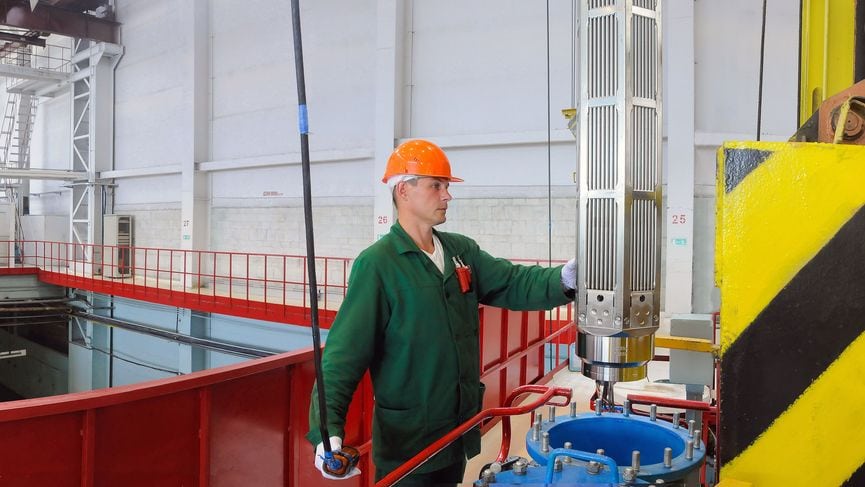Uranium Production Near Historic Lows as U.S. Reactors Look to Russia
Domestic uranium production is falling to levels not seen since the early 2000s, which are themselves equal to production during the dawn of the nuclear age in the 1950s. Prospects for any sort of rebound look bleak, as a joint venture between GE, Hitachi, and Toshiba is looking to import Russian-designed fuel assemblies for use in U.S. reactors.
A Trickle of Uranium
U.S. uranium production, which peaked at nearly 45 million pounds of uranium concentrate (U3O8) in 1980, fell precipitously in the 1980s and 1990s before leveling off at around 5 million pounds since 1991, according to data from the Energy Information Administration (EIA). The U.S. produced 3.7 million pounds in 2015 while importing 57 million pounds, about half of it from Canada and Kazakhstan.
Meanwhile, U.S. uranium inventories have climbed steadily during the 2000s, reaching 121 million pounds at the end of 2015, the EIA said—enough to supply two years of domestic demand. But that glut, and spot prices that have fallen steadily over the same period, have not deterred the major players from looking for new sources of uranium.
Looking East
On May 24, GE and its joint-venture partners in Global Nuclear Fuel-Americas (GNF-A) announced that they had signed a deal with Rosatom subsidiary TVEL to design and fabricate fuel rods for U.S. reactors. No U.S. reactor uses Russian technology, but TVEL currently produces TVS-K fuel assemblies that can be used in Westinghouse 3- and 4-loop pressurized-water reactor designs. The TVS-K is a square version of the hexagonal TVS fuel assemblies used in Russian VVER-1000 and VVER-1200 reactors (Figure).

In order for the deal to go forward, the Nuclear Regulatory Commission (NRC) needs to issue a license to market the assemblies for use in the U.S., which GE and its partners will take the lead on securing. Assuming the NRC signs off on the idea, the assemblies will be built at GNF-A’s Wilmington, N.C., facility.
—Thomas W. Overton, JD is a POWER associate editor (@thomas_overton, @POWERmagazine).